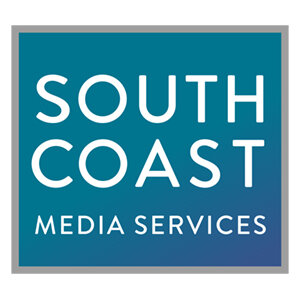THE ON-CAMERA INTERVIEW
By Bill Brauer
As a writer and producer for South Coast Media Services, controlling and shaping a client’s story is at the heart of any project I undertake. There are a lot of reasons for a scripted narrative versus a narrative based on interviews with key people: tight running time (think a: 30-second broadcast spot), lack of interest, and interesting, on-camera candidates, facts, and information that will likely change, high turnover of employees.
Mostly, we are engaged by our clients to change their audience’s behavior. To inform and convince. video doesn’t do detail well. But, it can persuade an audience WHY they need to do something.
Situations permitting, there is no power of persuasion like an engaged, knowledgeable on-camera interview. Except for a few easily recognizable, and expensive, professional voices (Morgan Freeman comes to mind), there is no substitute for the on-camera presence of someone who believes in what they’re doing and can convey that passion.
There are a few techniques that I’ve learned to help you get that passion on the screen.
BEGINNINGS
Before the camera rolls, there are some pre-production steps to nail down:
Your client may want interviews with employees and/or customers, or, you’ve sold them on the idea of at least a partial interview-driven video project. Either way, make sure you understand what your client’s final vision for the project is. What do they want their audience to walk away with? How will the video be presented? Is it internal or external?
If your client doesn’t have a project position paper yet, create one: Audience, messages, subjects to avoid, etc.
Work with your client to develop a draft on-camera interview questions list.
This is your opportunity to add value. You have someone on-camera for X amount of time, possibly a high-level executive. Are there any other questions you can ask in addition to your immediate task? Recruiting? Investor information? Safety? The answers are on the shelf for a future project.
Always create a paper trail with your client at every step of the process. Don’t just rely on verbal understandings based on face-to-face or zoom meetings.
Once everyone is on the same page about the video’s objectives, it’s your client’s job to provide you with on-camera interview subjects. They know their organization and employees better than you.
Consider the typical interview ratio: Out of 12 people you interview, 2 will be great (succinct, lively, knowledgeable), 6 will be OK (some quotes usable, with proper editing) and 4 will be useless (or near it).
Time and resources permitting, a pre-interview, by phone or face-to-face, will increase your success rate.
Often, especially when you are asked to interview highly technical people, they will want to answer your questions with precision. Nothing kills an interview quicker than the feeling that the person on the screen has been rehearsed, or is reading the answer. You are after authenticity. Sometimes the questions list is demanded in advance. If possible, don’t share the exact list. Let them know the general subjects that will be discussed. If it’s a Senior VP doing the asking, all bets are off.
Don’t ask what they don’t already know. Usually, the first answer on camera is the best, most heartfelt.
Spend a few minutes finding out about the person on the other side of the camera. The internet can give you a lot of info that you can use: Home town? Highschool or college? Hobbies?
Finally, in my experience, you want to be an interested, non-threatening person.
THE INTERVIEW
Everyone has been scheduled. The set is lit. Interview chairs are in place. Perhaps your client is monitoring the session from a remote location. The moment of truth. Here are a few things to keep in mind:
Small talk. Your crew is making final lighting and microphone adjustments. A little small talk is OK when your interviewee arrives and sits down on set.
It also helps a first-timer settle in and focus on you. Remember, there is a circus around the interviewee and lots of distractions. Your first mission is to hold attention.
This is where a little knowledge of the interviewee is useful. As the crew is finishing the last-minute tweaks, you can establish a bond over some mutual interest.
It’s human nature to look around for acclamation at the end of an answer. Keep the focus on yourself.
It may help to work with your Director of Photography to let you know silently (a tap on the shoulder) when the camera is rolling.
Don’t start off with what you actually want to ask, the important content. Begin by briefly exploring what the person does, how long at the job, etc.
You can then gently move into the real questions you need to ask.
Ideally, your questions list should build logically and ramp-up to a great “closer”, a statement that sums up the intent of the video.
Time permitting, if you hear the indication of something in the initial answer, probe that with follow-up questions that may not be on the list, but could be gold.
In the end, if you feel you haven’t got what the client needs, go back over things. “I love your answer to _____________. Can you say that again, but a little shorter? Like we’re between floors on an elevator.”
Also, and here it gets a bit tricky, you need to be an editor in your head. It really helps the process if you are listening to the on-camera answer and lifting out quotes you think can work. You’re listening to the answer, thinking about the next question, keeping eye contact, and pre-editing. It’s a lot to ask, but it’s really worth developing that skill.
In the end, compliment him or her on a job well done. That kind of closure could be important if there needs to be a follow-up session.
Follow up with me here, or give me a call at +1 713 661-3550.


